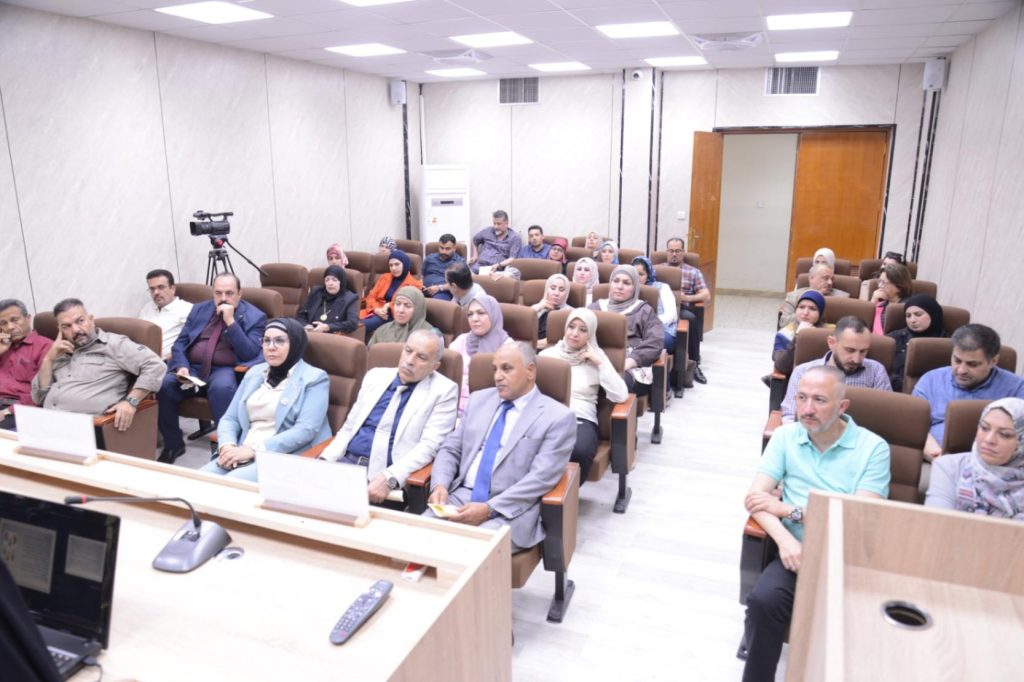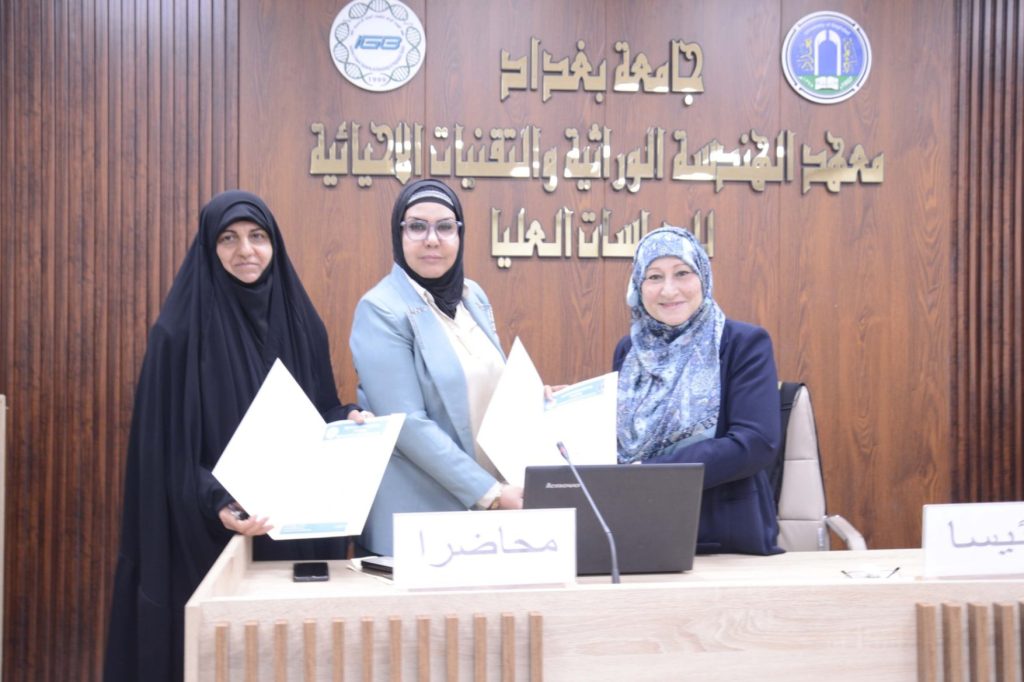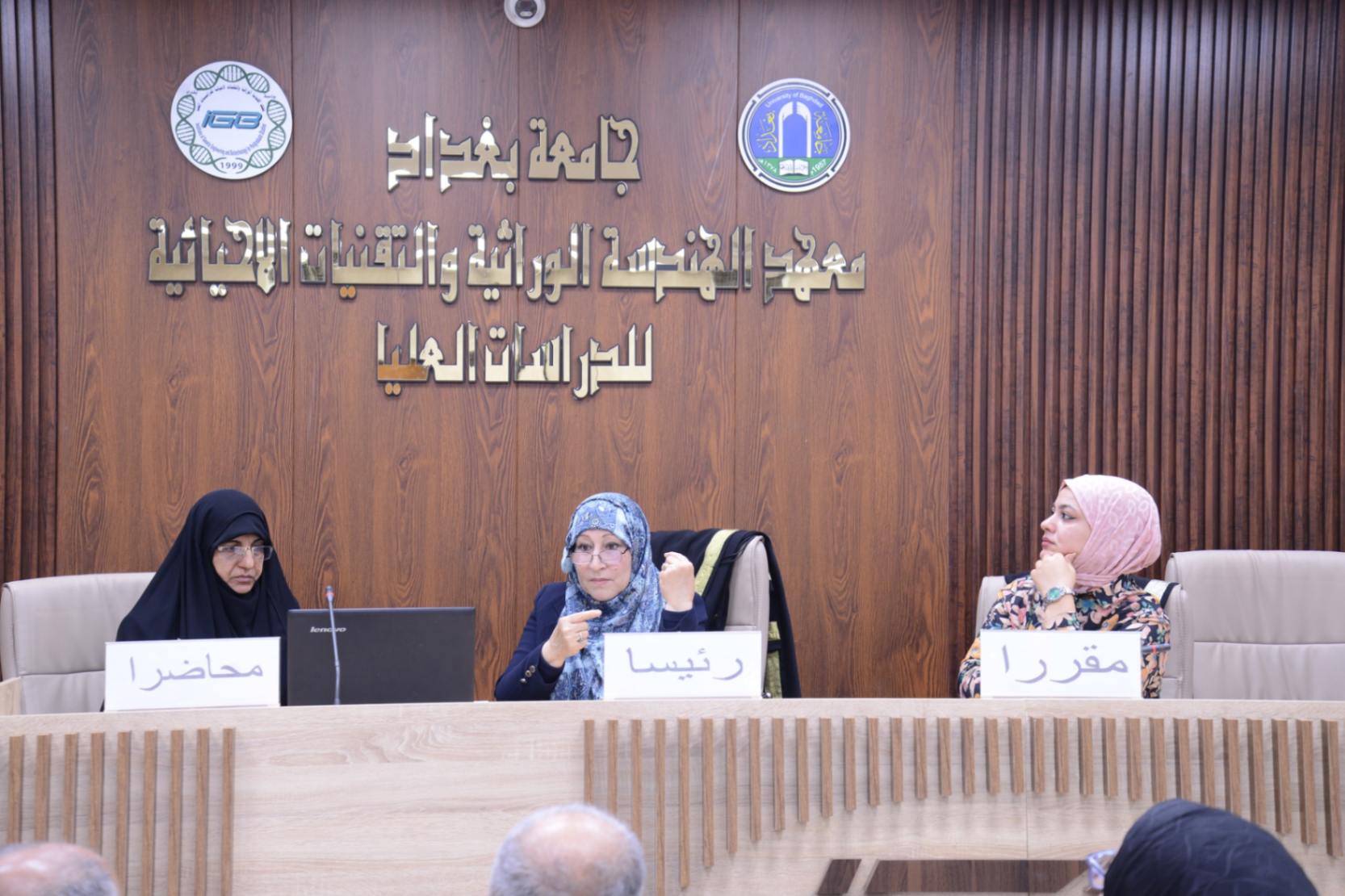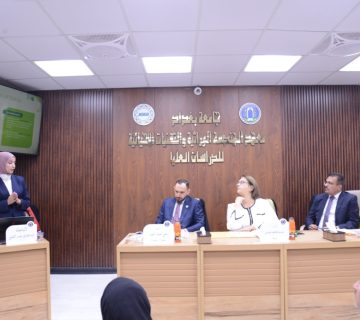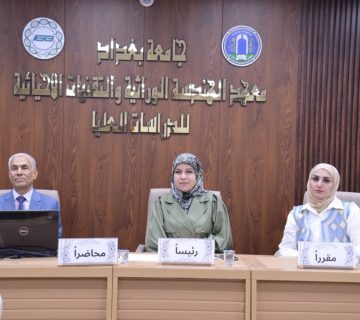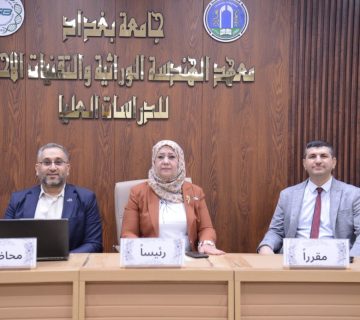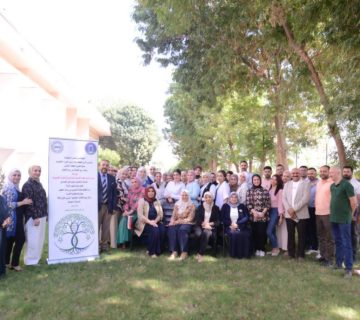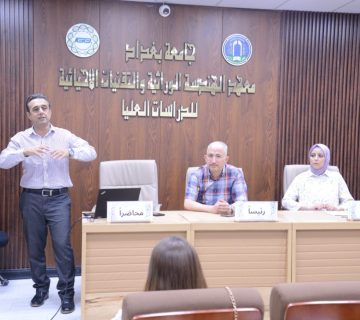The Institute of Genetic Engineering and Biotechnology organized a scientific symposium titled “Foot-and-Mouth Disease: Reality and Prevention”, presented by Professor Dr. Amina Naima Al-Thuwaini and Assistant Professor Dr. Nagham Jawad, under the management of Assistant Professor Dr. Zahraa Ahmed Shakir, with the attendance of the dean, professors, and staff of the institute.
The symposium aimed to shed light on the history, risks, symptoms, and prevention methods of foot-and-mouth disease (FMD), along with providing key recommendations to curb its spread.
Overview of Foot-and-Mouth Disease (FMD)
FMD is a highly contagious viral disease that affects cloven-hoofed animals, including cattle, buffalo, sheep, goats, deer, and, in some cases, camels. Recent studies indicate that 77% of farm animals in Africa, the Middle East, and Asia are at risk, making it one of the most serious threats to food security and livestock trade.
FMD in Iraq
The first recorded outbreak in Iraq occurred in 1937 in Sulaymaniyah and later spread to the southern regions. The country has experienced repeated outbreaks over the decades, with several viral strains recorded, including A, O, and Asia 1, between 1952 and 2013.
Symptoms of FMD
- Sudden high fever and severe illness.
- Ulcers and blisters in the mouth, tongue, gums, hooves, and sometimes the udder.
- Foamy, sticky saliva resembling thick threads.
- Difficulty walking, lameness, and reduced mobility due to hoof lesions.
- General weakness, loss of appetite, and decreased milk production.
Prevention and Control Measures
- Vaccination is the most effective preventive measure, requiring a vaccine matching the circulating viral strain.
- Boiling milk before consumption and wearing gloves when handling raw meat to minimize risk.
- Raising awareness among farmers and livestock breeders about the importance of reporting infections and adhering to vaccination programs.
Human Risk and Final Recommendations
Modern studies confirm that FMD rarely affects humans, but transmission may occur through unboiled milk or undercooked meat.
In conclusion, the symposium emphasized the importance of public awareness in combating the spread of the disease and called for strengthening vaccination programs to protect livestock and mitigate economic and health impacts.
